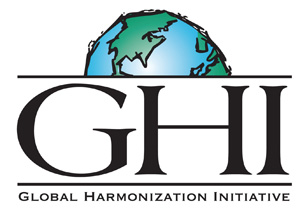Recent statistics show that the levels of world hunger, malnutrition and food- and waterborne disease are among the most critical global public health issues facing the international community. A 2009 report on international food security by the Food and Agriculture Organization (FAO) of the United Nations estimated that 1.02 billion people are victims of hunger, up from 963 million in 2008. That’s one-sixth of humanity, according to the FAO—an all-time high in recorded world hunger statistics.
For those who do get nourishment, the risk of illness, injury or death from unsafe foods remains a stark reality. The World Health Organization (WHO) reports that foodborne diarrheal disease is one of the most common illnesses worldwide, estimated at between 2.2 and 4 million cases annually. Each day, thousands of people die from preventable foodborne disease. In developing countries, 1.8 million children under the age of five die from diarrheal illness each year, and up to 70% of these cases are linked to infections associated with foodborne pathogens. In developed countries, one in three consumers contract a foodborne disease associated with pathogenic bacteria or microbial toxins every year. This data does not include other toxicological foodborne infections that may be linked to naturally occurring or man-made chemical contaminants, such as mycotoxins, acrylamide, antibiotic residues or dioxin.
As the world beat of globalization maintains its fast tempo, the challenges of ensuring food safety, security and nutrition on a global scale continue to grow in complexity.
Among those challanges are the following:
• Rapid globalization of food trade has increased the potential of adulterated food to negatively affect greater numbers of people worldwide, according to the most recent report by the WHO Initiative to Estimate the Global Burden of Foodborne Diseases. As the international food supply chain becomes more interconnected, foodborne disease outbreaks that were once localized now have the potential to become massive in scope.
• World market interdependence has increasingly exposed widely varying, and sometimes conflicting, national and international food safety laws, regulations and standards that create trade barriers that may not be based on adequate scientific evidence. Differing food safety policies, requirements or rules based on insufficient or contradictory science not only reduce the effectiveness of public health protection measures but can greatly reduce the availability of food that is actually safe to consume.
• National differences in food safety laws and rules also can create an uncertain global regulatory environment that reduces investment in and adoption of new technologies designed to improve food safety and quality for consumers.
These food safety and security challenges may seem insurmountable in a global cacophony of competing economic and political interests, but substantial progress in food protection efforts is possible if food safety requirements developed by national and international agencies can be harmonized. To do this, members of the international food science community have banded together to develop knowledge-based accord from the discord that exists today in global food safety regulation.
Composing a Movement for Change
 Founded in 2004 as a joint activity of the U.S.-based Institute of Food Technologists (IFT) International Division and the European Federation of Food Science and Technology (EFFoST), the Global Harmonization Initiative (GHI) is a network of scientific organizations and individual scientists working together to promote harmonization of global food safety regulations and legislation. Registered as a nonprofit association headquartered in Vienna, Austria, GHI is today supported by nearly two dozen international scientific organizations, academic research institutes and publishers (see sidebar).
Founded in 2004 as a joint activity of the U.S.-based Institute of Food Technologists (IFT) International Division and the European Federation of Food Science and Technology (EFFoST), the Global Harmonization Initiative (GHI) is a network of scientific organizations and individual scientists working together to promote harmonization of global food safety regulations and legislation. Registered as a nonprofit association headquartered in Vienna, Austria, GHI is today supported by nearly two dozen international scientific organizations, academic research institutes and publishers (see sidebar).
With this support, GHI facilitates global discussion about the scientific issues that support decisions made by national governments and international regulatory bodies by the following:
• Providing a foundation for sound, sensible, science-based food safety regulations;
• Creating a forum for scientists and technologists to interact with regulatory authorities on a global basis; and
• Offering industry, regulators, public health authorities and consumers an independent, authoritative information resource.
GHI has established a number of ways in which scientists can make progress in developing strategies to find the shortest route to achieving global harmonization in concert with international public health and food safety authorities, including the WHO, the FAO, the Codex Alimentarius Commission (CAC) and the International Organization for Standardization (ISO). In November 2009, Academic Press/Elsevier published GHI’s first book, Ensuring Global Food Safety: Exploring Global Harmonization, which presents a comprehensive overview of existing differences in regulations and their consequences, and argues for use of sound science to obtain global consensus for regulations. The book serves as one of the initiative’s primary educational outreach tools for scientists around the world. Outreach is also conducted through the GHI Ambassador Program, which is designed to empower individual members to inform and invite scientists in their nations or regions to participate in the organization’s consensus-building activities.
GHI’s working group format, which serves as the mechanism for consensus-building among scientists on global harmonization of food safety regulations, is the key to the initiative’s growth and progress in the past few years. By organizing member meetings, workshops and symposia throughout the world, GHI furthers the opportunity for collaborative work among members and provides educational outreach to key stakeholders, In 2009 alone, GHI held working group meetings in the U.S., The Netherlands, India, China, Czech Republic, Hungary and Mexico. This year, workshops are planned for locations in Turkey, South Africa and the U.S., among others. Indeed, the working groups are the heart and soul of GHI.
Striking the Chord of Consensus
GHI’s consensus-building process is conducted through a working group (WG) structure in which individual scientists can share their expertise and come to agreement on the scientific principles that will support informed global regulatory and legislative decision making. GHI is committed to building a WG forum that is accessible by food scientists worldwide to ensure that any consensus reached is broad-based and truly representative of current scientific knowledge from every continent. However, GHI does not form working groups or identify the topic areas of concern; rather, any stakeholder group may establish a WG within GHI, providing that the group’s primary focus is global harmonization of food safety regulations.
Each WG collects, reviews and critically evaluates the available scientific evidence within an issue area, and circulates its findings among its members worldwide for debate and comments. Once a scientifically founded consensus proposal has been developed and drafted, it is submitted to the GHI Executive Board. The consensus document is sent by GHI to qualified subject-matter experts, in as many countries as possible, for review and feedback on the collected scientific evidence and findings. These individuals are recognized by peer consensus as experts in their fields and are sanctioned by the GHI Supervisory Board. The intended result of this iterative process is a draft scientific consensus statement that will be circulated among all members, globally, for final agreement before being made available to lawmakers, regulators, standard-setting bodies and public health authorities around the world.
Currently, there are four WGs operating within the GHI structure:
Listeria monocytogenes in Ready-to-Eat (RTE) Meals Working Group. Established in 2007 and chaired by Cynthia Stewart, Ph.D., Silliker Food Science Center, this group focuses on the significant differences in food safety requirements for L. monocytogenes in RTE meals. For instance, whereas the EU has set a maximum level of 100 cfu/g, the U.S. requires the absence of this harmful pathogen in 25 g of food. Similarly, microbiological methods used differ between countries. This WG’s objective is to develop scientific consensus on what constitutes a safe maximum level and what test protocol should be used to determine that level, information that is essential for international trade of RTE foods.
The L. monocytogenes in RTE Meals WG held a meeting in Amsterdam, The Netherlands, in May 2009, and their findings have been incorporated into an article for an upcoming issue of Food Control. Once published, the article will serve as the draft consensus proposal presented to the GHI membership. The GHI Executive Board will then invite specialists across the globe to review the proposed consensus statement and provide expert feedback to the WG members. A final consensus document is expected to be made available to international regulatory and public health policy authorities by the end of the year.
The WG’s next event is a panel discussion, “Harmonizing International Regulations for Control of L. monocytogenes in Ready-to-Eat Foods,” to be held at the IFT Annual Meeting and FOODExpo in Chicago on July 19, 2010 (www.ift.org). A hands-on practical course, “Conventional and Rapid Methods Testing for L. monocytogenes in Food,” is scheduled to be held August 27, 2010 in conjunction with the International Union of Food Science and Technology (IUFoST) Annual Meeting in Cape Town, South Africa (www.iufost2010.org.za).
High-Pressure Sterilization Working Group. Chaired by Hosahalli Ramaswamy, Ph.D., of McGill University in Montreal, Canada, this WG aims to develop scientific consensus on what process conditions are adequate to ensure the safety of high-pressure-processed (HPP)-sterilized foods. HPP has become a fairly mature food processing technology implemented commercially, and sufficient research has been conducted in the U.S., EU and Japan to show that this non-thermal sterilization treatment can effectively eliminate pathogens while preserving—and in some cases, improving—the quality attributes of many food products. However, the regulatory requirements for HPP are still lacking or differ between countries, inhibiting the adoption and application of this proven food safety technology.
Plans are under way for the High-Pressure Sterilization WG to hold a consensus-building workshop at the IFT Non-thermal Processing Division Workshop, October 12–14 in Montreal, Canada (http://montreal-npd-workshop-2010.com).
Chemical Food Safety & Toxicity Working Group. Chaired by Jaap Hanekamp, Ph.D., HAN-Research, The Netherlands, this group recently has been restructured, the result of merging three previously established WGs considering issues within the same subject area. Its broad objective is to investigate and formulate chemical safety issues in the broad sense. Consensus-building discussions will go above and beyond “mere” toxicological considerations, since safety issues and standardizations of chemical exposures have multi-faceted consequences for the global economy, management of chemical safety data and the ultimate goal of legislation—namely, the abatement of risks to human health through reducing exposures via food, water and air.
The Chemical Food Safety & Toxicity WG plans to tackle a number of food and non-food chemical safety issues, including investigations into available scientific evidence, economic impact and regulatory implications of issues, such as:
• The European Union’s REACH (Registration, Evaluation and Authorization of Chemicals) regulation as an all-out approach to chemical safety;
• The application of scientific risk assessment methodology to address the question of safe maximum residue levels of selected antibiotics in food, such as chloramphenicol in aquaculture products;
• Semicarbazide as a marker for veterinary drug use;
• The scientific evolution and regulation of food-endogenous micronutrients;
• Brominated flame retardants; mycotoxins; and
• Toxicity testing protocols.
Members of this group are scheduled to give presentations and chemical safety-related courses and workshops in conjunction with the IUFoST Annual Meeting, August 22–26, 2010 in Cape Town, South Africa. The Global Harmonization of Mycotoxin Regulations Workshop will be held August 24, and a two-day Toxicity Testing Course will be held August 27–28.
Nanotechnology Working Group. Chaired by Frans Kampers, Ph.D., Wageningen Bionanotechnology Centre (BioNT), The Netherlands, the Nanotechnology WG is GHI’s newest consensus-building issue area. By 2014, nano-based goods are expected to be a $2.6 trillion global industry, and to date, more than 600 consumer products have been identified as containing nanotechnology. Nanotechnology has generated much discussion in the world press and among scientists regarding its potential benefits in many consumer product applications, but there are still many unknowns in terms of the impact on human health, the environment and processing operations posed by the application of nanomaterials in food products and packaging.
The WG plans to collect and assess the known scientific evidence in a range of areas related to the technology, such as data on reactivity (i.e., potential issues with the behavior of nanomaterials, both in terms of chemical interactions with other materials or chemicals and the impact on the environment and/or biological systems) and the potential of the nanoscale to increase the bioavailability of nutrients or, conversely, increase the bioavailability of chemical contaminants and their transport and mobility in the environment. The group will objectively explore the global safety and regulatory issues associated with the application of nanotechnology to food systems, with a focus on identifying scientific knowledge gaps and the toxicological information needed to perform risk assessments.
The GHI Nanotechnology WG will hold its first consensus-building workshop, “Harmonized Regulations on Nanotechnology and Food,” in Cape Town, South Africa at the IUFoST Annual Meeting on August 25, 2010.
Additional Working Group Areas of Interest. A number of additional areas of interest have been identified in recent months by stakeholder groups and GHI members who are proposing the establishment of official working groups. These include the following:
• Health Claims
• GRAS (Generally Recognized As Safe) Status
• Food Additives and Contaminants
• Precautionary Principle
• Definition of Science
• Cisgenic Marker-Free Modification
Those who are interested in forming a GHI WG are invited to contact the author with a statement describing the scientific issue and expected benefit(s) of achieving global consensus as it relates to harmonization of food safety regulations and law.
Be Instrumental in Ensuring Global Food Safety
GHI offers individual scientist memberships to professionals in the discipline of food science and technology working in all food safety stakeholder groups, including industry, government, academia and technology development. Individual scientist members are asked for comments on consensus statements and to give opinions based on their personal scientific expertise and insight. To enable global participation without financial hurdles, individual scientist members do not pay membership fees. An online enrollment form, along with more information on GHI’s Ambassador Program, mission and meeting calendar, is available at www.globalharmonization.net.
Beth Ann Crozier-Dodson, Ph.D., is Honorary Working Group Coordinator for the Global Harmonization Initiative (GHI). She is also the Assistant Director of the Kansas State University International Food Microbiology Rapid and Automated Methods Workshop, where for 16 years she has been instrumental in the planning and execution of the world-recognized conference founded by Daniel Y.C. Fung, Ph.D. She is a member of numerous professional and honor societies. Please contact her at beth.crozierdodson@globalharmonization.net.




